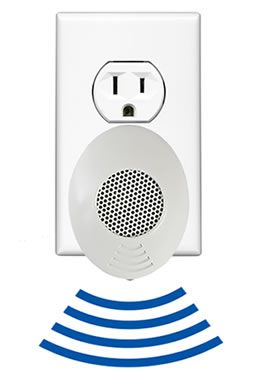





Mice
How to Get Rid of Mice Humanely
A thorough defense against mice includes techniques geared toward prevention and population control. Below Havahart® provides step-by-step instructions for getting rid of mice and keeping them away for good.
1 Reduce Attractants

Mice enter your home in search of food and shelter. It's important to keep your home clean and your food inaccessible, which will drive them to find food elsewhere.
- Clean your home on a regular basis: sweep, mop, dust, sanitize, etc.
- Store all food and pet food in rodent-proof containers.
- Do not leave pet food out after feeding times.
- Wipe up and sanitize all areas where crumbs or liquids have spilled.
- Keep all indoor and outdoor garbage in secure, airtight containers.
- Clean up fallen berries, fruits and seeds that surround your home.

2 Identify Areas of Damage
In order to select the best control method, it's important to first understand the scale of your mouse problem. You can do this by seeking signs of a mouse infestation, such as:
- mouse tracks
- mouse droppings
- grease marks and/or gnaw marks along floorboards, walls,
doors, windowsills, etc. - holes bitten through food packaging or cardboard boxes
- chewed insulation or electrical wiring
- mouse nests
- scratching sounds within walls
If signs of mice are abundant or found in multiple areas of your home, chances are you have multiple mouse colonies living there. If signs are concentrated into one small area, you may only have a few mice on your hands.
TIP: Mice usually live within 10 feet of a food source. This will help you focus your investigation.
3 Choose the Right Control Method
After examining your mouse problem, you can select the best control method(s) for you. Keep in mind that best results are achieved when utilizing multiple control tactics simultaneously.
Live Mouse Trap
Use a live trap to capture and physically remove mice from your home. Since a live trap will trap one mouse at a time, this solution is best for a smaller infestation.

- Select a steel cage trap or a plastic no-see trap, depending on your preferences.
- Determine a mouse's travel path by sprinkling talcum powder along walls near the damage and keeping an eye out for footprints. Place your trap along the run.
- Use peanut butter to encourage your mouse to trigger the trap door(s) closed.
For more trapping instructions and tips, read How to Trap a Mouse »
Shop Traps »Ultrasonic Mouse Repellents

Use ultrasonic mouse repellents to repel mice and keep them out. These humane devices emit irritating sounds that only rodents can hear, which drives them away. They're best used for larger infestations, as a preventative measure, and after removing mice with a trap.
- Ultrasonic sounds will not penetrate walls, furniture or other objects. Use one repellent per room, and ensure rooms are clear of clutter.
- Keep all rodent pets in rooms unaffected by repellents.
For further instruction and additional tips, read How to Repel Mice »
Shop Repellents »Expert Tips
- The reproduction rate of mice is extremely high, which allows a small mouse problem to quickly escalate into a large-scale invasion. It's very important to control mice at the very first signs of their presence and take preventative measures to keep them away from your home.
- Rodents like mice carry diseases that pose a threat to humans and pets, which is why it's important to be thorough in your defense against these pests. The best way to get rid of mice and keep them away is through an integrated control plan that includes removing attractants, trapping, repelling, and excluding.
- Before relocating a trapped mouse, make sure you are familiar with your local wildlife relocation laws.
- Mice gnaw through various building and other materials such as wood, foam insulation, neoprene seals, plastic, rubber, vinyl, and more. It's very important to use rodent-proof materials like metal, steel wool or concrete when sealing holes in your home's interior or exterior.
